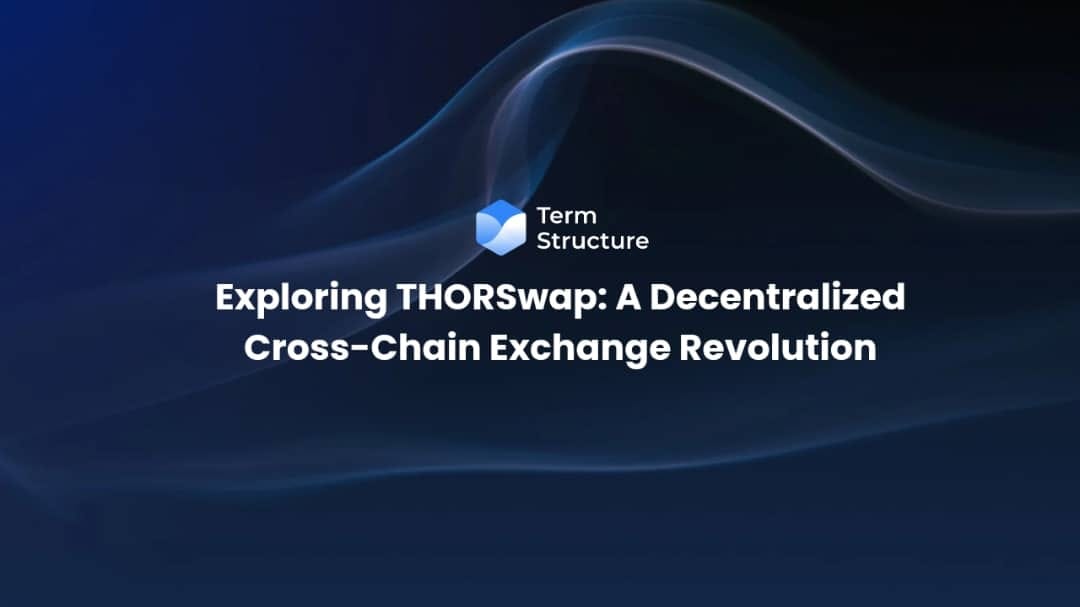Exploring THORSwap: A Decentralized Cross-Chain Exchange Revolution.

In the rapidly evolving world of decentralized finance (DeFi), one platform stands out for its unique capabilities: THORSwap. Being built on the decentralized liquidity protocol known as THORChain, THORSwap allows the user to exchange assets between various blockchains without involving third parties. This article will discuss what makes THORSwap unique, its place in the DeFi space, and how it can put users in charge of their funds.
What Is THORSwap?
THORSwap is a DEX in the THORChain ecosystem designed to provide seamless cross chain swaps in a fully permissioned and trustless manner without requiring users to entrust their assets to a third party. While using THORSwap users do not rely on CEXs applying various techniques to manage their assets but can control their money independently at various stages of trading. It is intended to meet the needs of customers who want decentralized, private, and multi-chain computing.
The design of the platform is built on THORChain, which provides the ability to perform cross-chain swap on nine large blockchains such as Bitcoin, Ethereum, BSC, and others. This capability addresses a significant gap in the DeFi landscape: almost all DEXs are centered around tokens within a single chain (fundamentally Ethereum based on tokens in Uniswap), but few are inclined for cross-chain interaction.
Key Features of THORSwap
1. Cross-Chain Swaps:
Cross-chain swaps are at the core functionality of THORSwap and represent the platform’s key offering. This means that the user can trade one asset from one blockchain for another, for example, Bitcoin for Ethereum without using tokens or recourse to bridges. This capability is only achievable due to THORChain’s decentralized liquidity pools through which native assets can be exchanged across chains.
Conventional DEXs normally work inside a particular blockchain realm that means that you can only swap tokens of that certain chain. For instance, platforms such as Uniswap, support only Ethereum based tokens. THORSwap, in turn, is built around Cross-chain liquidity, which provides more freedom and assets compared to THORChain.
2. Non-Custodial And Permissionless:
A core principle of DeFi is self-custody, and THORSwap upholds this by ensuring users always have control of their assets. In contrast to centralized exchanges, where funds are often held in custodial wallets controlled by the platform, THORSwap allows users to trade directly from their wallets. This reduces the risks associated with exchange hacks, insolvencies, or frozen accounts.
Additionally, the platform operates without any centralized oversight, meaning anyone can use THORSwap without going through traditional KYC (Know Your Customer) procedures. This permissionless model aligns with the ethos of DeFi, which seeks to eliminate intermediaries and provide unrestricted access to financial services.
3. Liquidity Provision And Yield Farming:
However, there is more in THORSwap than simple swapping – users can also become THORSwap providers for the decentralized pools. In doing so, liquidity providers, or LPs, receive yield on their native resources and assets. Impermanent Loss Protection means that THORSwap has cut the dangers of supplying liquidity during unstable markets. This protection pays back LPs for the Impermanent Loss ensuring more inevitable profits.
Since LPs provide liquidity for cross-chain pools, they enable seamless asset exchange while earning their passive incomes. The actual yields on native assets also match that users are not just earning synthetic or inflationary rewards but are part of a sustainable DeFi system.
4. THOR Token And Staking:
THOR is the original cryptocurrency used in the THORSwap ecosystem. It has functions in governance of the system, staking, and fee rebate. Stakers obtained the right to receive 75% of the protocol revenues, make transactions with a 20% discount, and become members of the community. Thus, staking actively contributes to the development of the platform as well as increases the extent of decentralization.
The staking mechanism is in line with the current DeFi trend of decentralized management, where token holders directly determine the direction of a specific platform. This is a slightly more decentralized and transparent solution for implementing platform improvement updates and decision-making.
5. DeFi Portfolio Tracking:
As seen when dealing with different assets, managing different assets in different chains requires a lot of work. For this, THORSwap has such utilities as THORYield and THORName. THORYield is an all-in-one portfolio tracker that lets the user follow their liquidity positions in various chains, staking, and balances in the wallet. At the same time, THORName is a cross-chain name service that serves as identity and multi-wallet addresses management service.
6. Developer-Friendly Tools:
THORSwap is also a developer’s delight, providing the Pathfinder API and SDK to integrate cross-chain functionality into decentralized applications (dApps). This makes development on THORSwap easier and at the same time offer value additions to the entire DeFi economy.
Why THORSwap Counts in the Context of the DeFi Market.
Currently, the most widespread DEXs are(single-chain DEXs), such as Uniswap and Sushiswap that provide opportunities for assets trading only in the Ethereum network or other similar systems only. Nonetheless as the number of blockchains increase and as users hold assets in multiple blockchains, there has been a drastic increase in the demand for cross-chain solutions. This is where THORSwap fits in.
- Solving Fragmentation In DeFi
Fragmentation is one of the main problems THORSwap solves ever since the creation of the first decentralized exchanges. There is a growing list of blockchains such as Binance Smart Chain, Avalanche, and Solana where people find themselves holding assets on multiple chains. THORSwap’s Interoperability leads to efficient interaction improving the liquidity of multiple Blockchains.
- Improving Security and Self Supporting
DApp users who value security will appreciate that THORSwap does not hold the users’ tokens. This model is the elimination of middlemen who have always been prone to hacking and fraud by cybercriminals in the past. In addition, users have full explanatory and physical control of keys and coins eliminating problems caused by exchange failures or regulatory actions.
- Impermanent Loss Protection
An uncommon element of THORSwap is ILP, or Impermanent Loss Protection, for liquidity providers. Impermanent loss on the other hand is the situation whereby the value of assets which is placed in a liquidity pool is changed or in other words it means that one may potentially lose more money through holding an asset in a liquidity pool than holding it outright. THORSwap has a protection mechanism that provides users with compensation for these occurrences, cutting down on the dangers connected with offering liquidity.
THORSwap At A Glance
Conclusion
THORSwap was created to practically define what a decentralized exchange is and also serve as the first entrance to the multi-chain world. THORSwap is the exchange aspect of THORChain that allows users to swap between assets across different blockchain networks without permission in a secure manner due to cross-liquidity pool. A key focus on users, yields, and developers makes it one of the most important participants in the DeFi world.
Depending on the angle you come at it from, you are likely to be interested in THORSwap, whether you need cross-chain swap services, are searching for genuine yield farming, working on the next great dApp etc. In the future as DeFi space is growing faster THORSwap is one of key working platforms focusing on interoperability and ensuring the choices of the users of this new financial revolution.
For more details, visit THORSwap's official website or read their docs.

